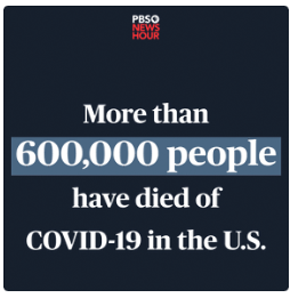Health Plan Weekly
-
Biden Admin Aims to Stymie MLR Inflation Among ACA Plans
In its annual omnibus regulation for the Affordable Care Act exchanges, CMS revealed that it aims to crack down on some questionable behavior used by health plans when calculating their medical loss ratios (MLRs) — a move that will likely result in insurers paying even higher rebate amounts to consumers than they already are.
The ACA requires individual and small-group market insurers to spend at least 80% of their premium income on medical care and quality improvement. For the large-group market, that threshold is 85%. If insurers’ MLRs dip below those percentages, they’re required to return the difference to plan members. MLR rebates, which are calculated using a three-year average, have risen considerably in recent years and totaled $2 billion for the 2020 plan year.

-
Antitrust Regulators Struggle to Keep Up With Hospital M&A
Hospital consolidation has entered a new stage: Large regional hospital systems have finished acquiring most of their smaller local competitors and have begun to combine with large health systems of similar size. Experts say the new phase of market concentration, which also includes large hospital groups acquiring physician groups and outpatient centers, is bound to increase prices for health plans and consumers — and that there’s little regulators can do to stop or reverse it.
Hospital deals are not new: Over the past decade-plus, hundreds of hospital groups have combined, following a trend toward consolidation and vertical integration across the American economy. According to the American Hospital Association, nearly 1,600 hospital transactions took place between 1998 and 2017. Health system market power is now more concentrated than ever: in most regional markets, two or three players control most of the inpatient facilities. In fact, in a majority of U.S. metro areas, one hospital system controls more than half the market.

-
Insurers May Not Be Ready to Implement No Surprises Act
Health insurers are struggling to comply with the price and billing transparency requirements of the No Surprises Act (NSA), according to a survey conducted by Change Healthcare, Inc. Meanwhile, insurers are lining up behind the Biden administration as it prepares to defend regulations implementing the NSA from a legal challenge brought by provider trade groups.
The No Surprises Act bans balance billing — when out-of-network providers send patients a bill for the amount an insurer refuses to pay — and requires payers and providers to work out the dispute themselves. If that fails, an HHS-approved independent arbitrator will decide between two payment amounts: one submitted by the provider, and one by the insurer.

-
UnitedHealth Downplays Cost of Omicron, At-Home Tests
For health insurers, the new year has ushered in a mandate to cover at-home COVID-19 tests and a highly transmissible coronavirus variant that is making it clear the pandemic is far from over. During its recent conference call to discuss fourth-quarter 2021 financial results, UnitedHealth Group explained how its massive, integrated health care enterprise is responding to both challenges.
The Biden administration on Jan. 10 unveiled new guidance specifying that all group and individual health plans must reimburse members for eight free over-the-counter COVID tests per month without cost sharing. The administration also said it would allow insurers to cap test costs at $12 each if insurers set up in-network agreements with pharmacies/retail stores that allow members to access free tests directly, without filing for reimbursement.

-
News Briefs: HHS Renews Public Health Emergency | Jan. 21, 2022
HHS Sec. Xavier Becerra renewed the COVID-19 pandemic public health emergency until April 16, extending the PHE that was first announced on Jan. 31, 2020, by then-HHS Sec. Alex Azar into its third year. The PHE declaration makes possible enhanced Medicaid funding — in exchange for states pausing eligibility redeterminations — and expanded telehealth flexibilities for Medicare and Medicaid beneficiaries.
New insurer entry into the Affordable Care Act (ACA) exchanges is slowing down after several boom years, according to a new Robert Wood Johnson Foundation report. “While the total number of plan offerings increased by about one third between 2020 and 2021 (from 10,289 to 13,596), this year’s increase to 15,638 constitutes growth of about 15 percent,” wrote Katherine Hempstead, Ph.D., senior policy adviser for the foundation.












